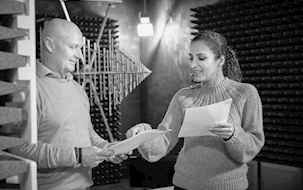ASSA ABLOY gains new knowledge and peace of mind with electrical safety test
What happens to your IT product if the user drops it – is the equipment still safe? Could a short circuit inside the device start a fire?
For the multinational Swedish company ASSA ABLOY AB, a global leader in locks, security and door opening solutions, safety is a key issue. The company manufactures, among other products, automatic doors and industrial gates, and some of their products include radio modules, meaning that they must comply with the EU standard EN IEC 62368-1 Audio-/video-, information- and communication technology equipment – Part 1: Safety requirements. ASSA ABLOY has just received safety approval for a newly-developed product in accordance with EN IEC 62368-1 from FORCE Technology, which is DANAK accredited to carry out this type of test.
“We use the test in our product documentation, which we need to obtain CE labeling and fulfill the legislators’ CE requirements,” says Christian Trobro, Product Safety & Liability Manager at ASSA Abloy. “For us the most important issue is that the test is an impartial and competent approval of our product, which provides us with a good basis when we start selling the products.”
Attestation of Conformity
If the electrical safety test shows that the product is safe to use, an ‘Attestation of Conformity’ is issued, which can be used as documentation to both customer and the authorities, for example in connection with obtaining CE labeling or import approval.“The test provides us with a sound, impartial assessment of our product and verifies that we have done everything correctly,” explains Christian Trobro.
Documentation if the product fails
The results of the electrical safety test are written down in a test report, which is included in the product’s Technical Construction File (TCF) that must be made available for authority checks while the product is on the market and up to 10 years after.“The test report is a technical assessment of our product. We can use it as documentation in the event of a report as to whether one of our products has failed. It is proof that we have done our job correctly. In that way it is peace of mind for us,” says Christian Trobro.
The process provided new information about the product
During the electrical safety testing process itself, many companies find that they receive new and detailed technical information about their product, for example how to make it safe so that it does not harm the user or its surroundings. Christian Trobro also believes that the electrical safety test has given them some extra information:“The test procedure has also been educational for us, as the test has given us new information about our product. You learn new things about your product."
Facts
EN IEC 62368-1, Audio-/video-, information- and communication technology equipment – Part 1: Safety requirements
- The standard covers all types of IT equipment, for example products that include radio modules like Wi-Fi and Bluetooth.
- The requirements in EN IEC 62368-1 are aimed at avoiding or minimizing the risk of the product being involved in causing injury or damage to people, domestic animals or property.
- The Radio Equipment Directive (RED) requires product safety in Article 3.1 (a). This essential requirement can be met by eg EN IEC 62368-1.

